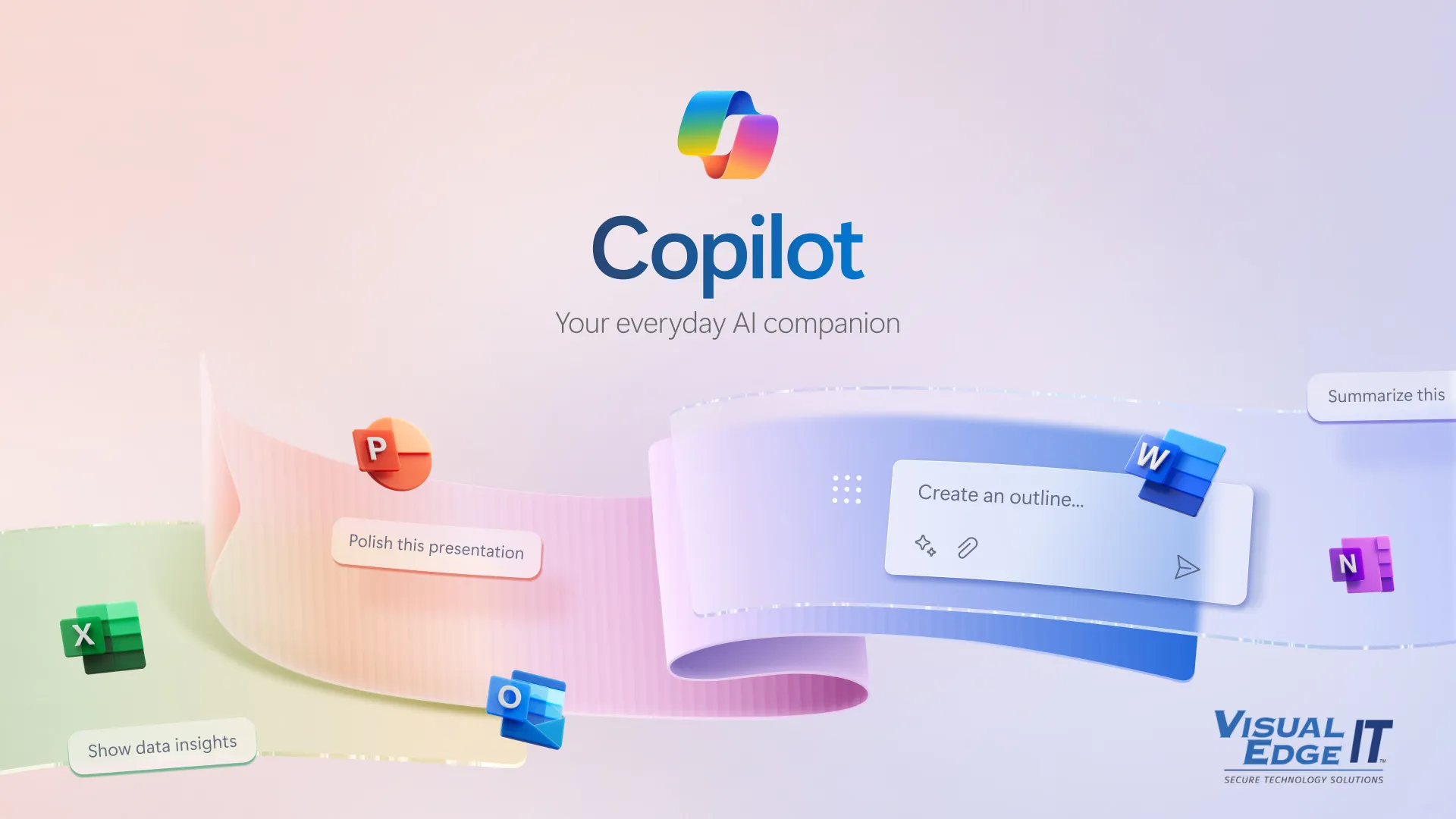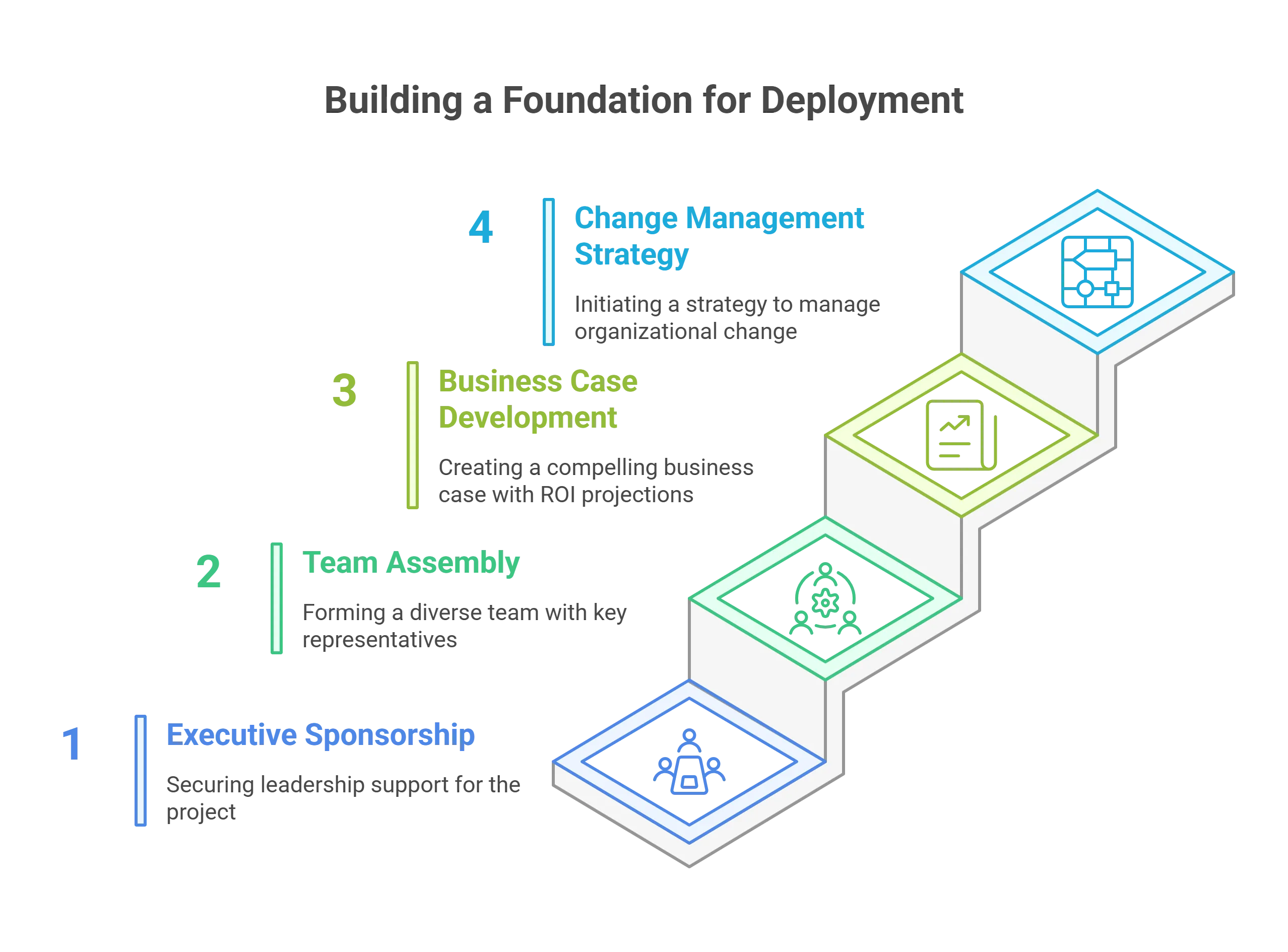Microsoft Copilot Leadership Deployment Guide

Deploying Microsoft Copilot is simple. Getting it right? That requires leadership. This guide outlines a structured, stage-based framework that reflects Microsoft Digital’s proven methodology and real-world implementation strategies. Each phase is designed to help leaders move from activation to adoption, with clarity, control, and business alignment.
Deployment Framework Overview
Phase 1: Pre-Deployment Assessment (2–4 Weeks)
Objective: Ensure readiness and business alignment.
- Assess M365 and data maturity
- Review licensing, security, and compliance
- Build the business case and success metrics
- Assemble a cross-functional Copilot team
Technical Prerequisites:
- Microsoft 365 E3 or E5 licenses with Azure Active Directory accounts
- Current Channel or Monthly Enterprise Channel for Microsoft 365 apps
- OneDrive deployment and SharePoint configuration
- Network connectivity aligned with Microsoft 365 principles

Success Criteria:
- All technical prerequisites validated and documented
- Stakeholder alignment is achieved with clear roles and responsibilities
- Project governance structure established
Phase 2: Governance Setup (4–6 Weeks)
Objective: Implement strong guardrails before enabling usage.Data Governance Implementation:
- Sensitivity label taxonomy development with clear classification levels
- Data loss prevention policies configuration using Microsoft Purview
- Container defaults establishment and file label inheritance
- Oversharing detection and remediation protocols
Security Framework:
- Zero Trust principles application across seven protection layers
- Identity and access management controls implementation1
- Threat protection and monitoring capabilities deployment
- Risk assessment completion using Microsoft's frameworks
Compliance Considerations:
- Regulatory requirements analysis and mapping
- International compliance considerations, including EU Data Boundary
- Works council engagement where applicable
- Audit and monitoring procedures establishment
Phase 3: Controlled Implementation (4–8 Weeks)
Objective: Deploy strategically through pilot cohorts.
- Select high-impact pilot users and use cases
- Automate group licensing and analytics
- Launch phased rollout based on maturity
- Communicate clearly with pilot and non-pilot users
Phase 4: Adoption & Enablement (12+ Weeks)
Objective: Drive usage, confidence, and business value.
- Activate champions and peer support networks
- Provide live and role-specific training
- Monitor usage and gather qualitative feedback
- Track time savings and measurable outcomes
Phase 5: Support & Optimization (Ongoing)
Objective: Sustain value and innovate continuously.
- Train support teams and set escalation paths
- Optimize licensing and system performance
- Pilot new features and integrate with business apps
- Document learnings and evolve best practices
🎯 Critical Success Factors
- Executive Commitment
- Sponsor the initiative visibly and vocally
- Data & Governance Readiness
- Structured content, labeled data, secure boundaries
- Change Management Discipline
- Communication, training, and culture alignment
- Phased Execution
- Validate before scaling
- User-Centric Design
- Train the way people actually work
🚨 Common Pitfalls
- Poor data hygiene and permission sprawl
- Treating Copilot like a feature, not a capability
- No ownership of coaching or adoption success
- Compliance and risk oversight gaps
📊 Success Metrics to Track
| Area | KPI Examples |
| Adoption | Daily Active Users, Usage by Dept, Feedback |
| Productivity | Time Saved/Week, Fewer Manual Tasks |
| Tech Health | Response Times, Incident Volume, Uptime |
| Business Impact | ROI Realized, Customer Experience Gains |
📌 Leader’s Action Plan
- Schedule a Copilot Readiness Review
- Assign Ownership Across Business + IT
- Communicate Why It Matters, Not Just What It Does
- Build Enablement into Daily Workflows
- Meet Monthly to Review Impact Metrics
"Easy to deploy doesn’t mean easy to lead. Copilot is a system shift—not a switch."